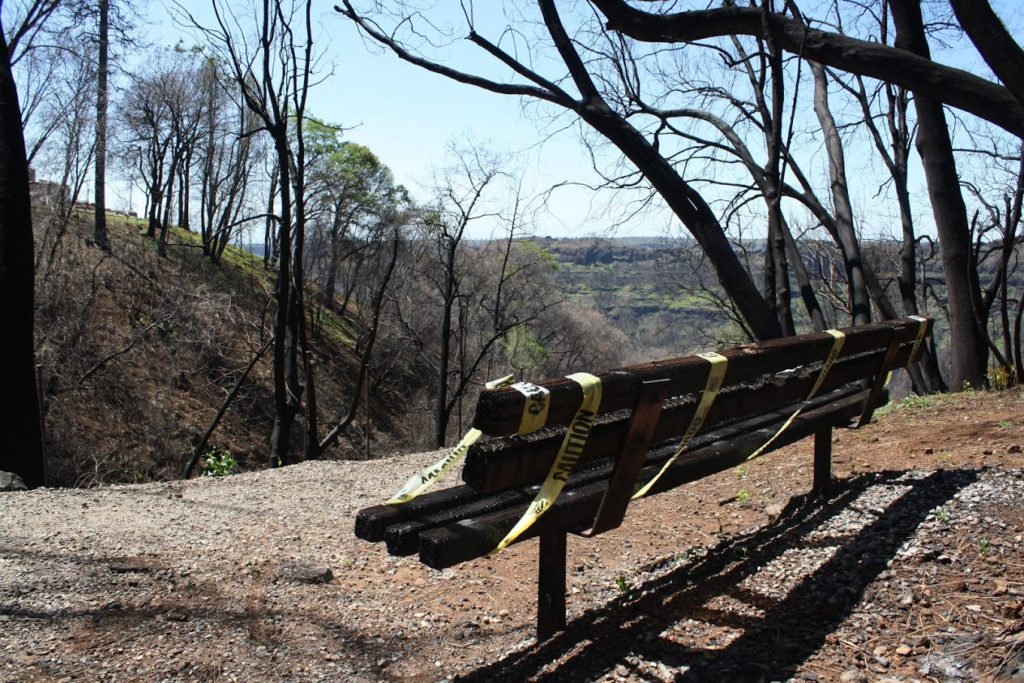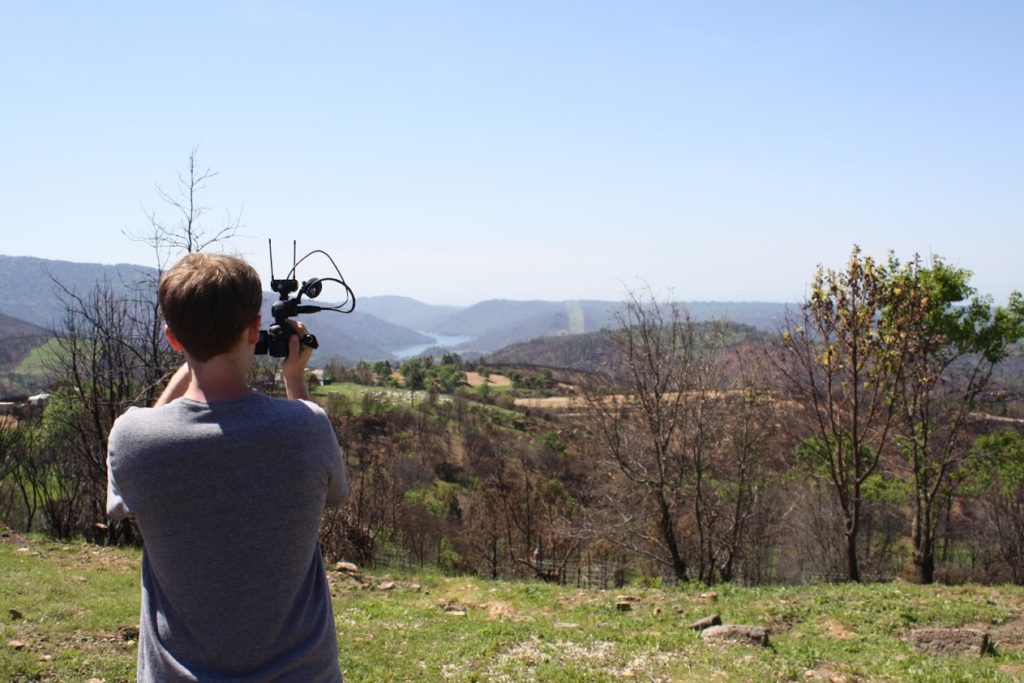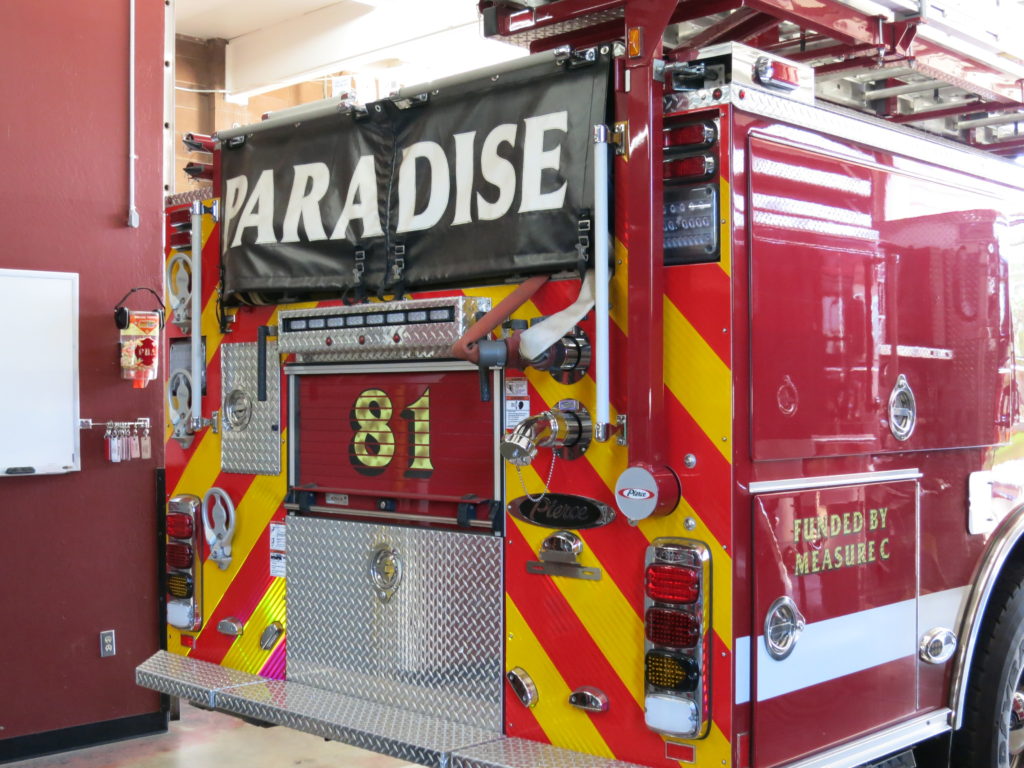The “Camp Fire” that devastated parts of Northern California proved that the longstanding fears of residents were well founded when it ripped through Paradise, Magalia, Concow, and other communities in early November. The wildfire eliminated 95% of the Town of Paradise, killing at least 85 people there and in the surrounding area. Thousands of homes and businesses were destroyed, leaving the city in a charred ruin.
However, as residents of Paradise vow to rebuild what was lost, local officials are hoping to build it better– with an infrastructure less prone to such catastrophic damage and improvements that will last a lifetime.
But when the painstaking weeks after the Camp Fire stretched into months of slow-paced of recovery, hopes to quickly reestablish were dampened by the restrictions of government and an unusually cold winter.
In February, the Federal Emergency Management Agency announced that $1.7 billion in federal relief dollars were in jeopardy if the city and Butte County continued to allow residents to live on toxic land burned by the fire. Leaving many residents feeling angry and unsure of their next move.

“My husband and I have all of five our kids up here. While it seems stupid, we were thinking about just needing a property; most of us had nowhere to go after that,” said Melissa Cohen, a resident of Paradise. “That really screwed us good initially.”
Rebeca Mueller, 31, her husband and their two children packed up and moved in with a relative in Arizona when it was time to evacuate. But access to specialized public education quickly became a problem. The temporary schools she selected didn’t offer the special needs care that her children so desperately need.
So, hearing that officials in California were planning on allowing residents to move back and live on their charred properties was welcome news to the recently pregnant Mueller. The next step; temporary housing. After cashing a check from her insurance company, Mueller and her family purchased an RV for $10,000 and hit the road for Paradise.
For the next several months, their small RV became their new home. But living in a city with a damaged critical infrastructure, the family struggled to make ends meet. Their remaining finances were quickly exhausted, spending thousands on water, propane and gas. More than what they paid for the mortgage on their now-leveled house of six years. “We’re lucky though. We have a home where thousands of others don’t,” said Mueller.
Days after the fire broke out, a county public health official issued a warning that the debris left over from the fire could contain high levels of mercury, lead, carcinogens and radioactive materials. Prompting health concerns among community members.
The Town of Paradise was well aware of the risks before allowing their residents to return, but after showing signs of desperation, local officials decided it would be best to give residents the chance to regain their livelihoods. “It was a decision made with residents in mind,” said Jack Slota, a FEMA representative on the ground in Butte County.

Mueller and her husband have been aware of the health risks, but like many friends and neighbors, had no other options and needed to act fast.
The Town of Paradise was well aware of the risks too, but in a state of feeling greatly desperate after the fire, local officials decided it would be best to give residents the chance to gain their livelihoods again. “It was a decision made with residents in mind,” said Slota, a FEMA representative on the ground in Butte County.
In early December, ordinances were passed allowing residents to move back to their burned properties, but with some restrictions. Butte County for example required property owners to have a minimum of 1-acres, additionally requiring residents to position their homes at least 100 feet away from fire debris.
The California Office of Emergency Services, the California Govenor’s office, and FEMA were aware of the health concerns and the public health official’s advisory. But the key is that they did not threaten to cut funding at that time. That prompted Paradise and Butte County to promptly began issuing utility building or “pull” permits, according to Paradise Mayor Jody Jones. Before the Camp Fire, The Town of Paradise typically approved 30 building permits. As we approach the six-month mark since the fire, Paradise, California has approved 400 building permits.
While the priority of local government continues to be establishing essential services, like a reliable local water system, Gregg Boline, a spokesperson for the mayor of Paradise says that it will be important to ensure that all new structures are built up to the California state fire code.
“This time, we’re going to be prepared,” he says. “We have work to do, but we owe it to our residents to rebuild efficiently, and to do this right.”
The breathtaking landscape is also a concern.
“This town absolutely loves trees. We have to be careful with how many trees we have around our structures because that also creates an abundance of risk,” Bolin says.

Many of the buildings in the town were made of kindling and other fragile materials, resurrected in the 1960’s.
Other highlights of the new fire code include buildings being made of flame-resistant building materials with tweaks like requiring venting along a roof top to prevent embers from accessing the attic.
Rob Barber is a local builder, losing the home shared with his wife Clara to the Camp Fire. “My gorgeous house, a lifetime of tools, everything is gone.” However, Barber remains committed to staying in Paradise and rebuilding. “If anyone is going to do it, it will be me,” he says.
“We were one of the first to apply, but we only got approval to start building a week ago.”
Cleanup efforts have already proven to be a challenge of historic proportions. “Clearing land can be very tricky in this neighborhood. It’s a day and night project until it’s done,” said Ellie Young, a debris removal supervisor for the California Office of Emergency Services. Their agency expects efforts to clear land will be the biggest debris cleanup since the acclaimed 1906 earthquake in San Francisco. Preliminary estimates for the cost of debris removal alone are nearing $1.2 billion, according to the local long-term recovery group.
But for those who need to rebuild without insurance, options for assistance remain limited, but available.
The Federal Emergency Management agency has committed to covering 75% of the costs associated with clearing properties, but the assistance has been offered on a fist come, first-serve basis.
John Kounz, a representative with the California Office of Emergency Services says the agency’s goal after the fire continues to be getting rid of toxic debris and to get utilities such as electricity and water up and running. Officials estimate that that reestablishing the town’s water system could take five years.
“COES is focused on the community,” he says. “Navigating federal resources to help residents get the relief they need.”
Federal funds will provide for about 75% of the town’s recovery costs, and the majority of remaining costs will be picked up by the state.
According to rebuilding information available online, federal funds will pay to rebuild roadways and public utilities. After private land is cleared, individuals will be responsible for rebuilding their homes, regardless of their insurance coverage or ability to obtain separate charitable grants or additional assistance from the government.
Kounz says that it is possible for the community to come back, even better than before.
“We can make it safe to rebuild and live there,” Kounz says.
But even with the unfathomable devastation that residents have endured, Mayor Jody Jones believes that Paradise has a bright future ahead.
“Everything will be brand new, which will make people want to live here.” Jones said.